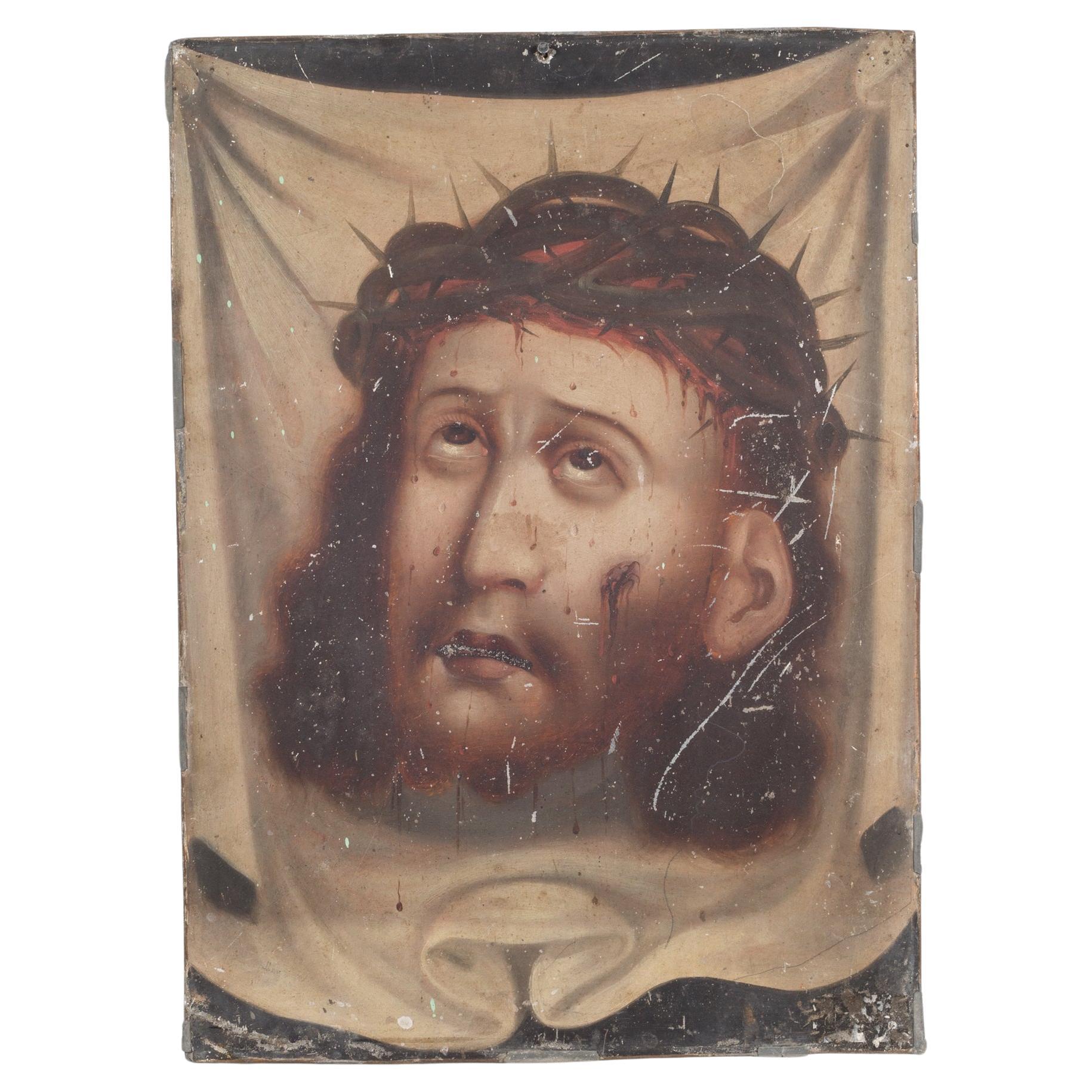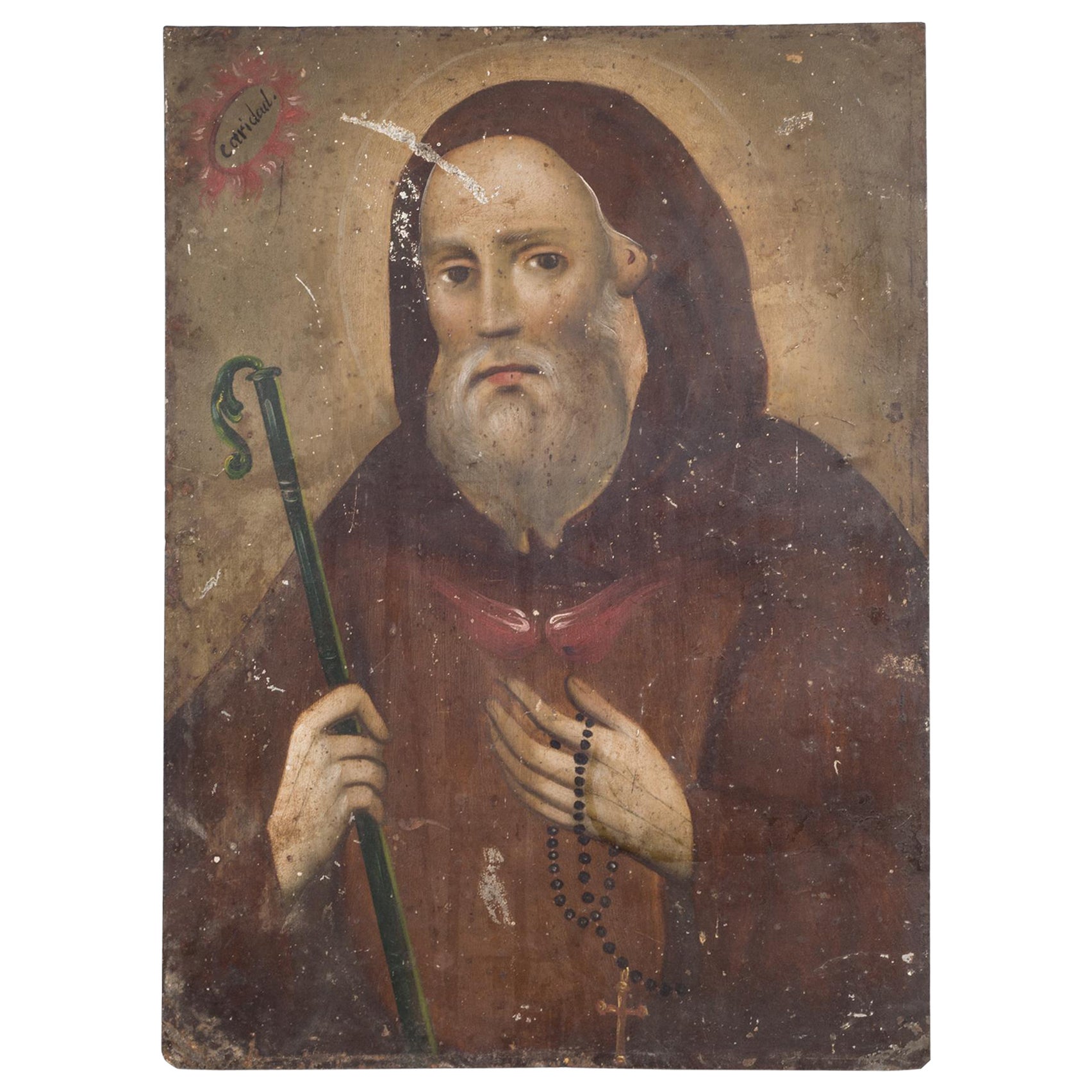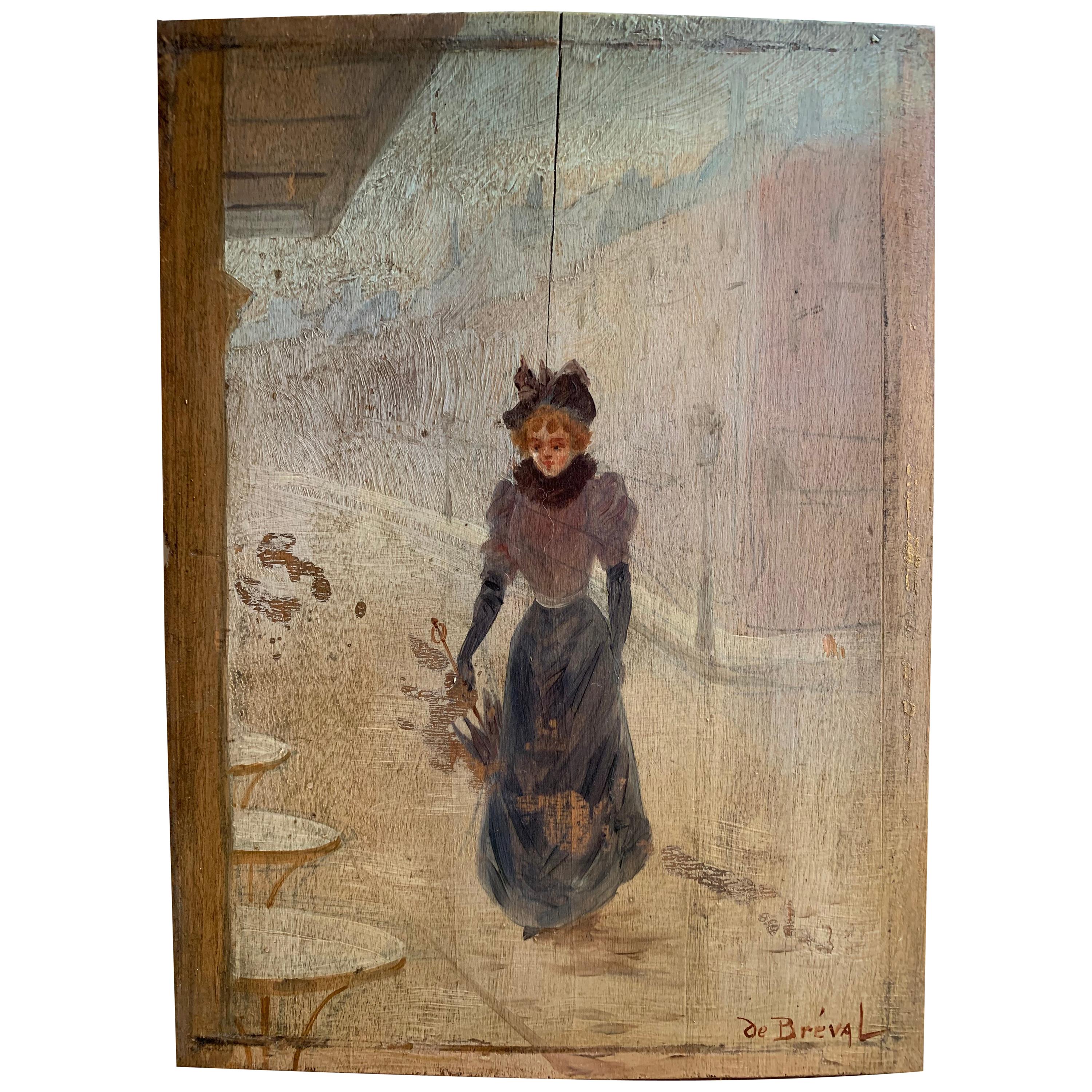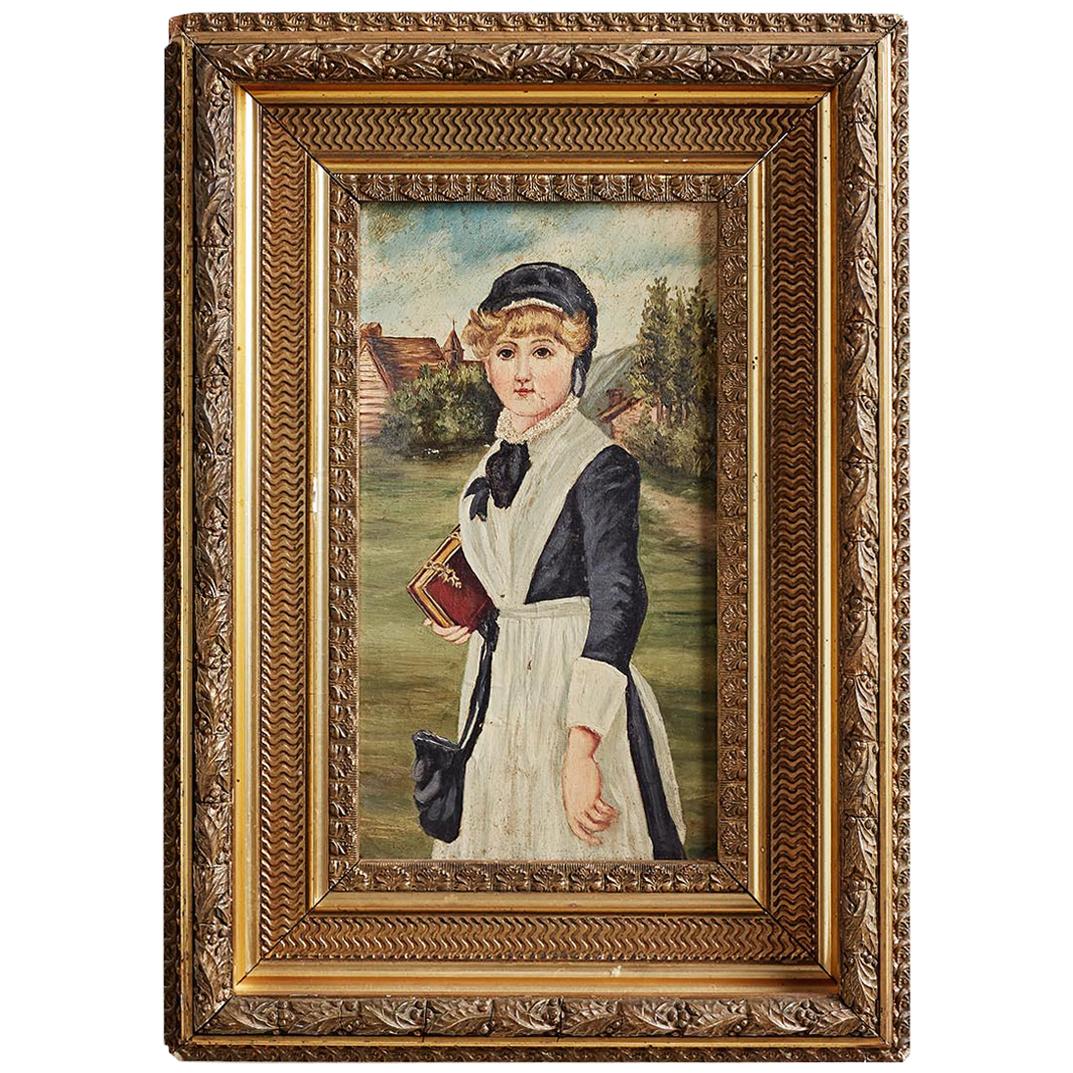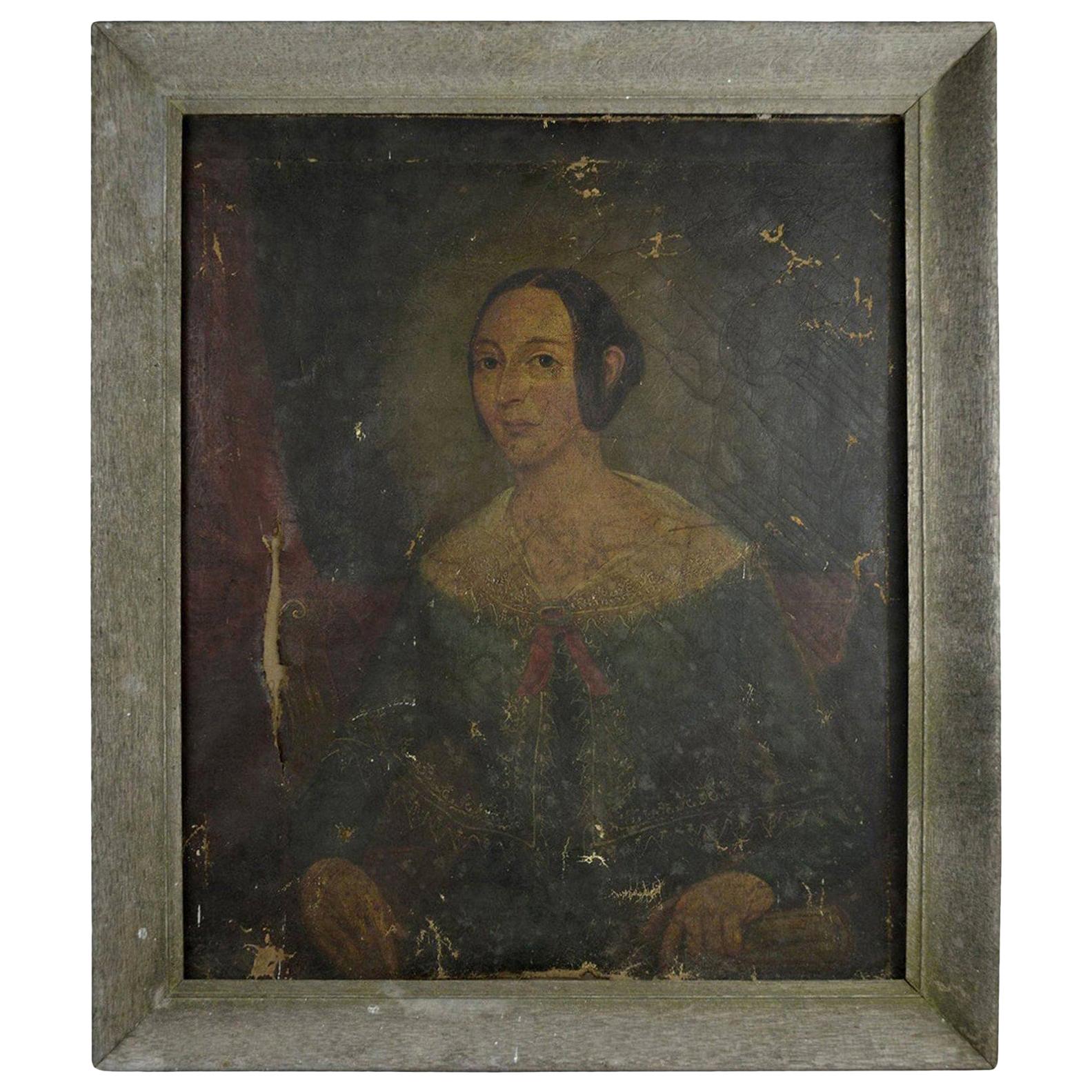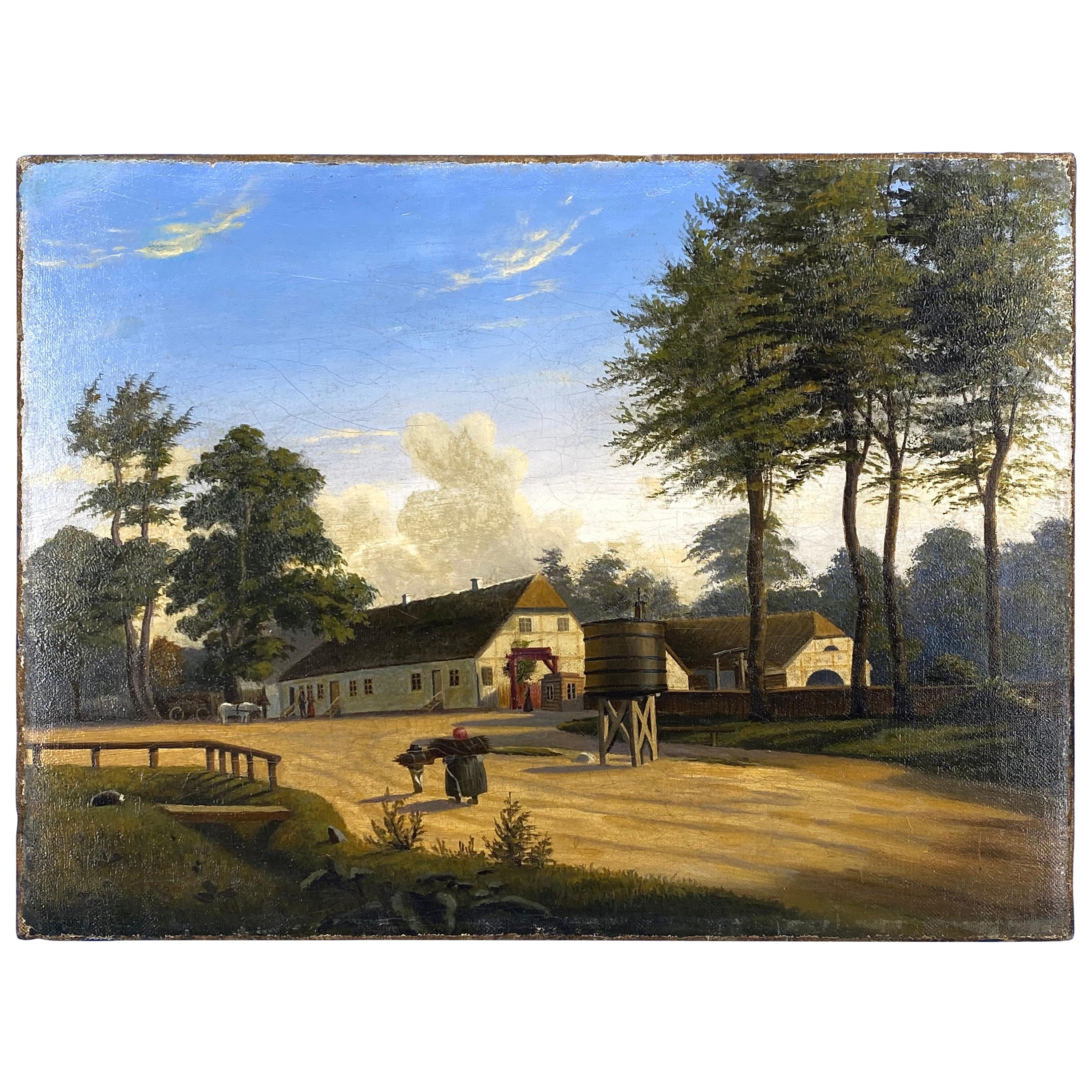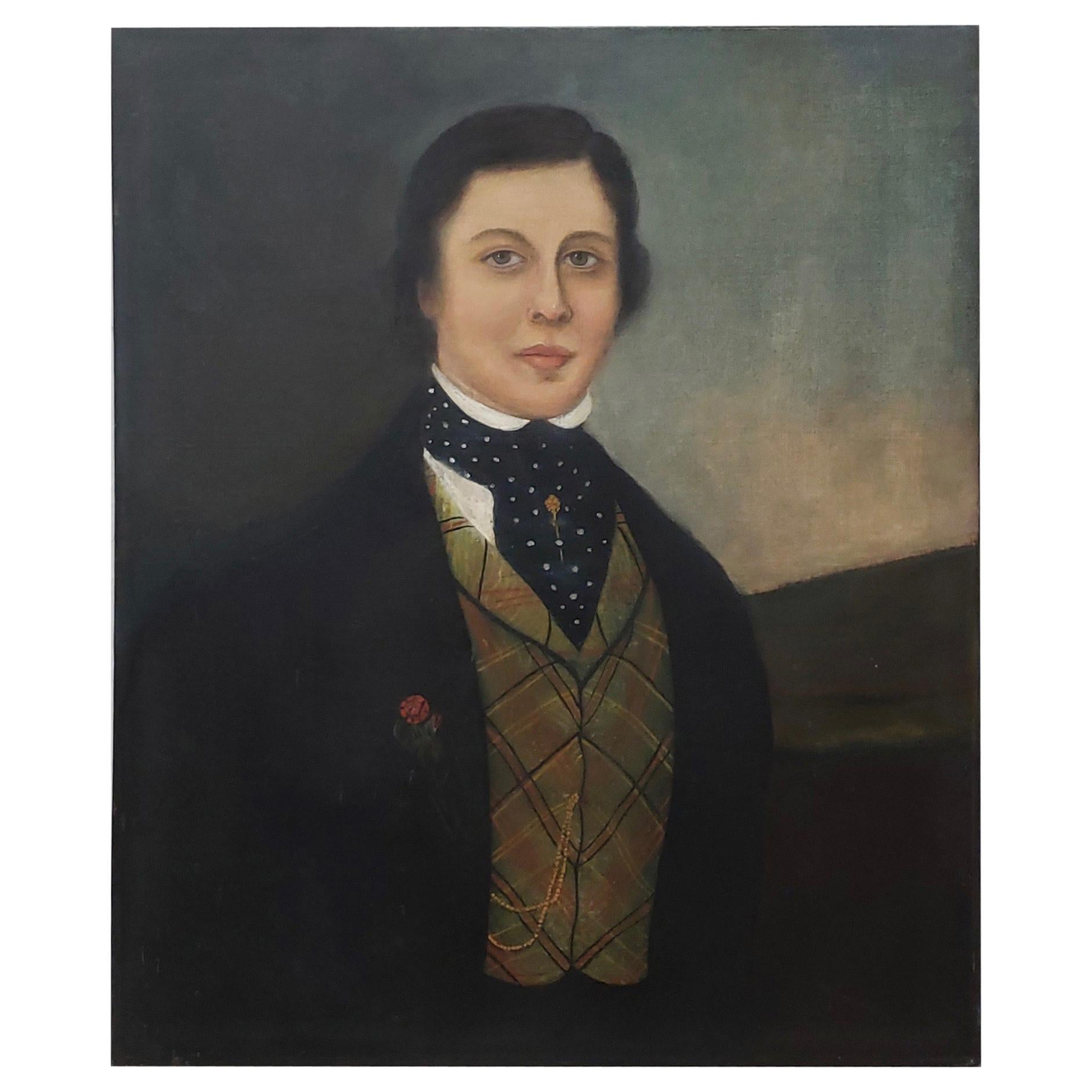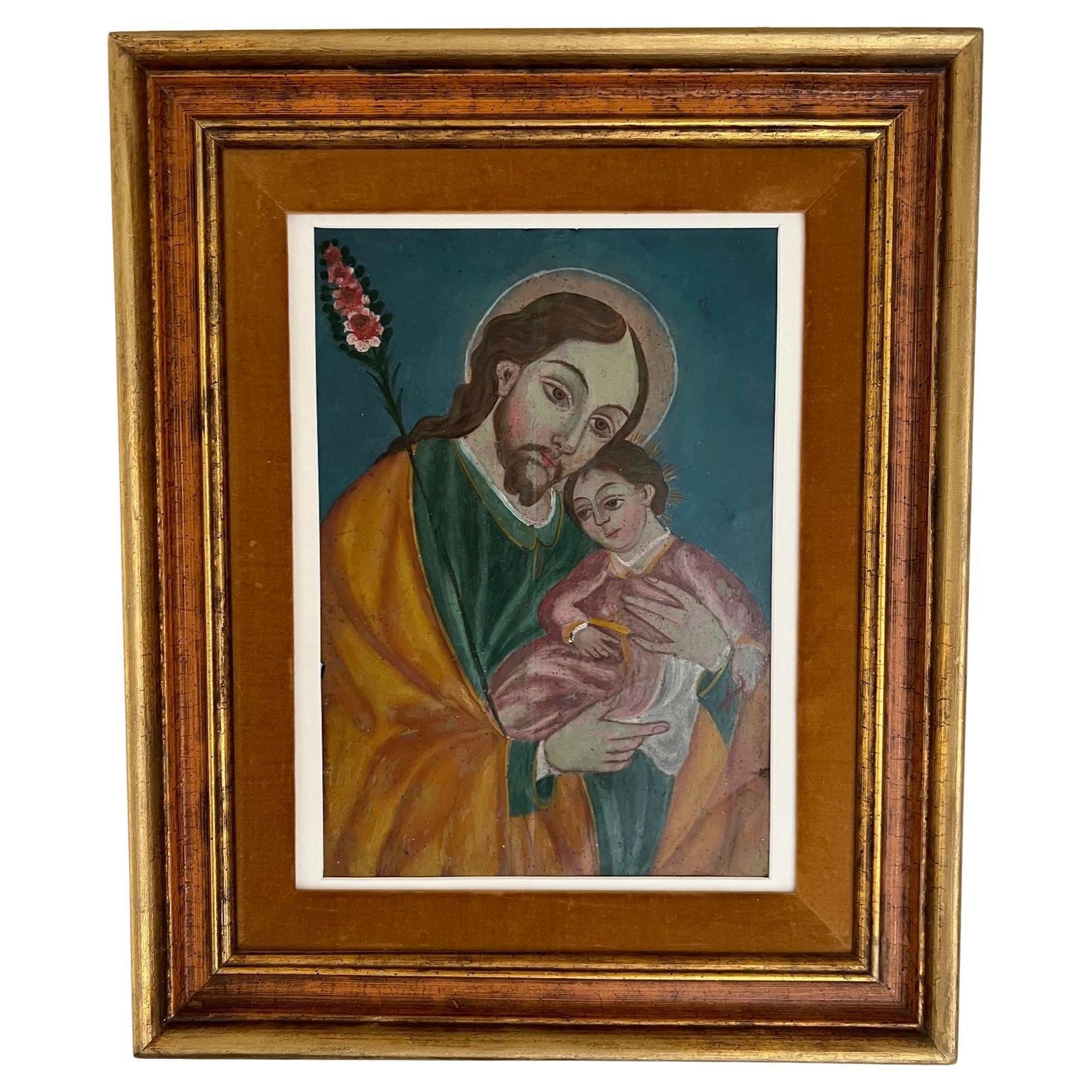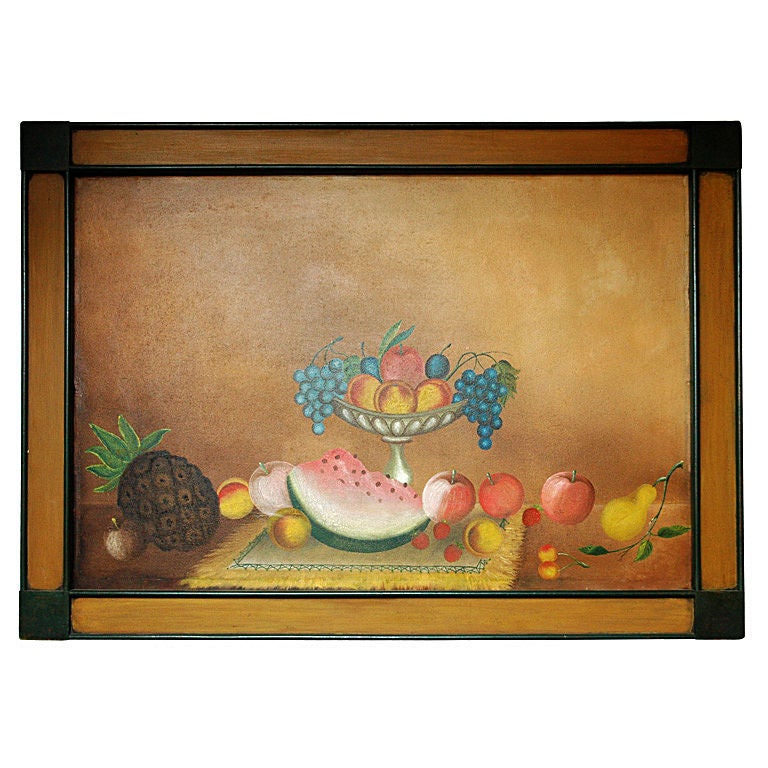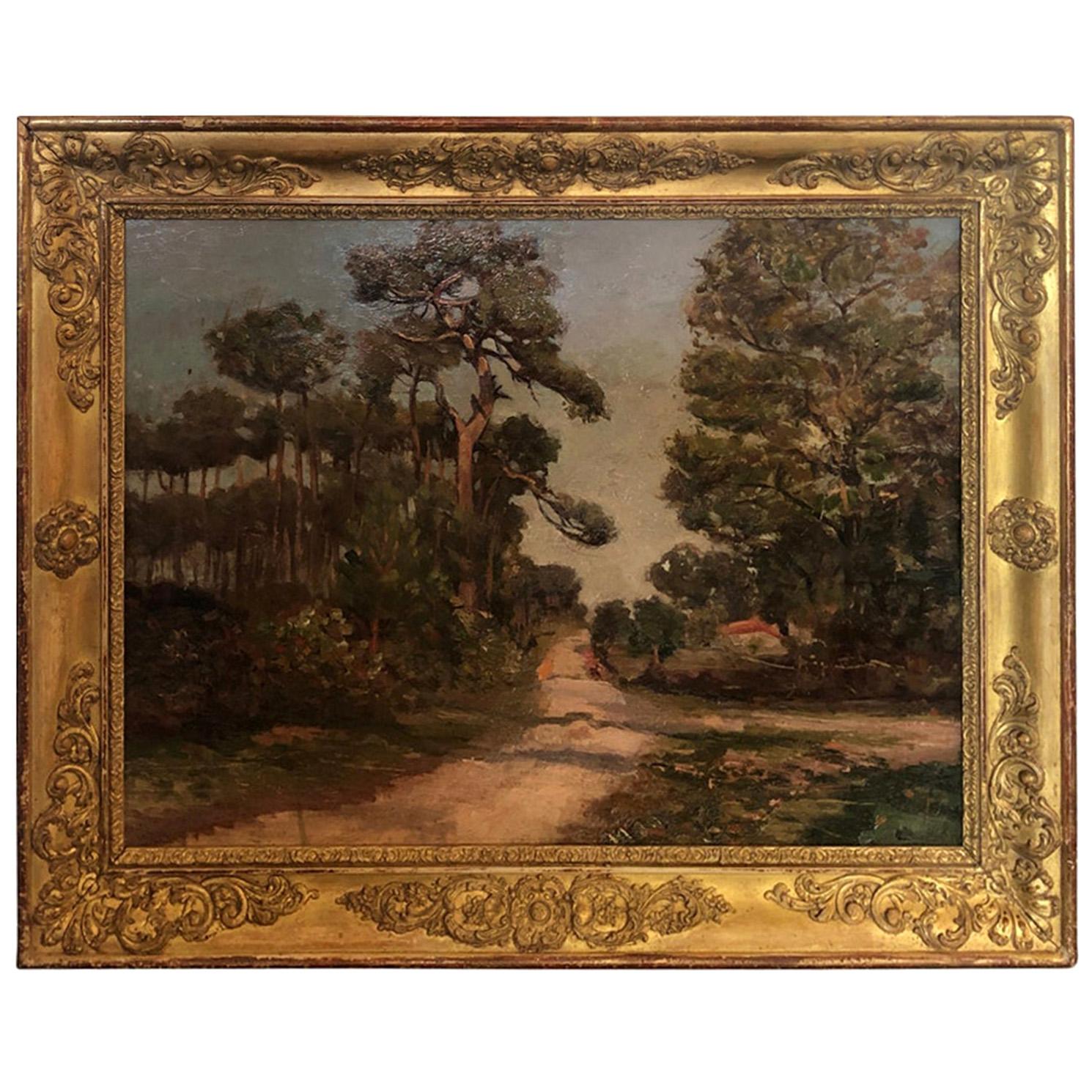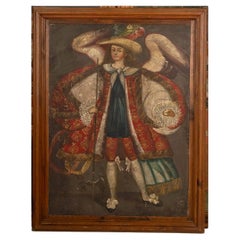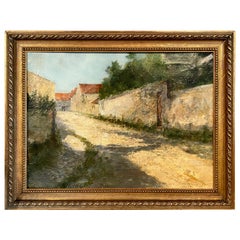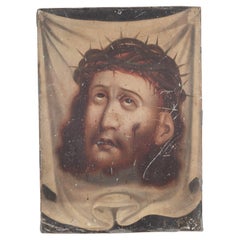
Retablo of "El Nino de Atocha", 19th Century
View Similar Items
Want more images or videos?
Request additional images or videos from the seller
1 of 7
Retablo of "El Nino de Atocha", 19th Century
About the Item
- Dimensions:Height: 16 in (40.64 cm)Width: 12.5 in (31.75 cm)Depth: 1 in (2.54 cm)
- Style:Spanish Colonial (Of the Period)
- Materials and Techniques:
- Place of Origin:
- Period:
- Date of Manufacture:circa 1820-1840
- Condition:Wear consistent with age and use. The retablo is in overall good condition and exhibits a normal deep patination which is anticipated with retablos of this age.
- Seller Location:Pasadena, CA
- Reference Number:Seller: mjhdesignarts.g'snino1stDibs: LU2519317760502
About the Seller
5.0
Gold Seller
These expertly vetted sellers are highly rated and consistently exceed customer expectations.
Established in 1993
1stDibs seller since 2017
224 sales on 1stDibs
More From This SellerView All
- Spanish Colonial Cuzco Painting of Archangel MichaelLocated in Pasadena, CAThis is a very good Spanish Colonial, Cuzco School (Cuzqueno) painting of the Archangel Michael. The painting appears to have little or no restorations and, as such, is in remarkable condition. We have chosen to leave that painting as found as the patina highlights the depth and character of the painting. We have listed separately two complementary larger paintings of the Virgin Mary and the Archangel Michael acquired from the same estate. The Cuzco school is a Peruvian Spanish Colonial religious artistic tradition in which Incan spirituality was incorporated into Catholic iconography. These Peruvian paintings incorporate artistic forms that distinguish Cuzqueno paintings from other Spanish Colonial artistic traditions. The Jesuit order, arriving in the mid-16th century, was the principal Catholic order whose mission it was to convert the Inca to Christianity and introduce Christian iconography and European type painting techniques to the Inca capital of Cuzco. Cuzco School paintings...Category
Antique Mid-18th Century Peruvian Spanish Colonial Paintings
MaterialsCanvas, Wood, Paint
- Early 19th Century Romantic PortraitLocated in Pasadena, CAThis is a moody portrait, possibly a self-portrait, by a very competent early 19th century romantic artist. The intense gaze of the subject hold...Category
Antique Early 19th Century French Romantic Paintings
MaterialsCanvas, Wood, Paint
- 19th Century Italian Village SceneLocated in Pasadena, CAThis is a charming Post-Impressionist painting of a late 19th century Italian village street. The painting is well-executed by a competent artist and is signed at lower right. The in...Category
Antique 1880s Italian Other Paintings
MaterialsCanvas, Wood, Paint
- 19th Century Charles E. Gatehouse Horse PaintingLocated in Pasadena, CAThis is a signed and dated painting of a race horse by the well-listed English artist, Charles E. Gatehouse (1866-1952). Gatehouse was known for his excellent depictions of horses an...Category
Antique Late 19th Century English Victorian Paintings
MaterialsCanvas, Wood, Paint
$3,160 Sale Price20% Off - 18th Century Painting of Cherub/PuttiLocated in Pasadena, CAThis is a charming painting of a cherub with an arm extending forward, perhaps hold out a bouquet of flowers. The painting dates to the mid-18th century and is probably cut from a la...Category
Antique Late 18th Century Italian Rococo Paintings
MaterialsGold Leaf
- 19th Century Drawing of Male NudeLocated in Pasadena, CABeautifully rendered drawing of male nude. This drawing is most probably French in origin, dating to the late 19th or early 20th century. The drawing...Category
Early 20th Century French Beaux Arts Drawings
MaterialsPaper
$1,750 Sale Price38% Off
You May Also Like
- 19th C. Mexican Retablo, C.1880Located in San Francisco, CAABOUT An original 19th century Mexican folk retablo. Oil paint on tin. Subject unknown. CREATOR Unknown. DATE OF MANUFACTURE c.1880. MATERIALS AND TECHNIQUES Oil Paint on Tin. CONDITION Good. Wear consistent with age and use. DIMENSIONS H 14 in. W 10 in. HISTORY Retablos, better known as 'laminas' in Mexico, are small oil paintings on tin, wood and sometimes copper which were used in home altars to venerate the almost infinite number of Catholic saints. The literal translation for 'retablo' is 'behind the altar.' This unique genre of art, deeply rooted in European history, was brought to Mexico with the arrival of the Spanish and then ultimately adopted by New World mestizo natives to become what is known today as the Mexican folk retablo. The retablo was an art form that flourished in post conquest Mexico and then ultimately, with the introduction of inexpensive mediums such as tin, reached its pinnacle of popularity in the last quarter of the 19th century. With some exceptions, mostly untrained artists from the provinces worked to produce and reproduce these sacred images; some subjects painted more prolifically than others. A typical "retablero" may have reproduced the same image hundreds, if not thousands of times in his or her career. These oil paintings were sold to devout believers who displayed them in home altars to honor their patron saints. There are virtually hundreds of saints, each invoked to remedy a different situation. "San Ysidro Labrador," the patron saint of farmers, is venerated for good weather...Category
Antique 19th Century Mexican Folk Art Paintings
MaterialsTin
$1,395 Sale Price36% Off - 19th C. Mexican Retablo "Veronica's Veil", c.1880Located in San Francisco, CAAbout An original 19th century Mexican folk retablo "Veronica's Veil" or "El Divono Rostro" in Spain . Oil paint on tin. The Veil of Veronica, known in Italian as the Volto Santo or Holy Face, is a Roman Catholic Relic which, according to legend, bears the likeness of the Face of Jesus that was imprinted on it prior to Jesus' crucifixion. According to Roman Catholicism, Saint Veronica encountered Jesus in Jeruselum on the way to Calvary. When she paused to wipe the sweat (Latin, suda) off his face with her veil, his image was left on the veil. In the small village of Osa de la Vega in Spain, there lived a couple who led a very pious life. They were Gregorio de la Torre and Isabel Corral. From their father, Juan Montilla, they inherited a picture of the Face of Jesus or the Divino Rostro. A story that is told one day, to the amazement of many who confirmed its veracity, the picture began to perspire with living blood. News of this extraordinary event spread swiftly and widely throughout the land. CREATOR Unknown. DATE OF MANUFACTURE c.1880. MATERIALS AND TECHNIQUES Oil Paint on Tin. CONDITION Good. Wear consistent with age and use. DIMENSIONS H 14 in. W 10 in. HISTORY Retablos, better known as 'laminas' in Mexico, are small oil paintings on tin, wood and sometimes copper which were used in home altars to venerate the almost infinite number of Catholic saints. The literal translation for 'retablo' is 'behind the altar.' This unique genre of art, deeply rooted in European history, was brought to Mexico with the arrival of the Spanish and then ultimately adopted by New World mestizo natives to become what is known today as the Mexican folk retablo. The retablo was an art form that flourished in post conquest Mexico and then ultimately, with the introduction of inexpensive mediums such as tin, reached its pinnacle of popularity in the last quarter of the 19th century. With some exceptions, mostly untrained artists from the provinces worked to produce and reproduce these sacred images; some subjects painted more prolifically than others. A typical "retablero" may have reproduced the same image hundreds, if not thousands of times in his or her career. These oil paintings were sold to devout believers who displayed them in home altars to honor their patron saints. There are virtually hundreds of saints, each invoked to remedy a different situation. "San Ysidro Labrador," the patron saint of farmers, is venerated for good weather...Category
Antique 19th Century Mexican Folk Art Paintings
MaterialsTin
- 19th C. Mexican Retablo Saint Francis c.1880Located in San Francisco, CAAbout An original 19th century Mexican folk retablo of Saint Francis. Oil paint on tin. St. Francis of Assisi, Italian San Francesco d’Assisi was born 1181-1182 in Assisi, duchy of Spoleto, Italy and died October 3, 1226. He was canonized July 16, 1228. He founded the Franciscan orders of the Friars Minor and the lay Third Order. He was also a leader of the movement of evangelical poverty in the early 13th century. His evangelical zeal, consecration to poverty, charity, and personal charisma drew thousands of followers. Francis’s devotion to the human Jesus and his desire to follow Jesus’ example reflected and reinforced important developments in medieval spirituality. Cretor Unknown. Date of manufacture c.1880. Materials and techniques Oil Paint on Tin. Condition Good. Wear consistent with age and use. Dimensions H 14 in. W 10 in. History Retablos, better known as 'laminas' in Mexico, are small oil paintings on tin, wood and sometimes copper which were used in home altars to venerate the almost infinite number of Catholic saints. The literal translation for 'retablo' is 'behind the altar.' This unique genre of art, deeply rooted in European history, was brought to Mexico with the arrival of the Spanish and then ultimately adopted by New World mestizo natives to become what is known today as the Mexican folk retablo. The retablo was an art form that flourished in post conquest Mexico and then ultimately, with the introduction of inexpensive mediums such as tin, reached its pinnacle of popularity in the last quarter of the 19th century. With some exceptions, mostly untrained artists from the provinces worked to produce and reproduce these sacred images; some subjects painted more prolifically than others. A typical "retablero" may have reproduced the same image hundreds, if not thousands of times in his or her career. These oil paintings were sold to devout believers who displayed them in home altars to honor their patron saints. There are virtually hundreds of saints, each invoked to remedy a different situation. "San Ysidro Labrador," the patron saint of farmers, is venerated for good weather...Category
Antique 19th Century Mexican Folk Art Paintings
MaterialsTin
- 19th c. Mexican Retablo "Veronica's Veil" c.1880Located in San Francisco, CAABOUT An original 19th century Mexican folk retablo "Veronica's Veil" or "El Divono Rostro" in Spain . Oil paint on tin. The Veil of Veronica, known in Italian as the Volto Santo or Holy Face, is a Roman Catholic Relic which, according to legend, bears the likeness of the Face of Jesus that was imprinted on it prior to Jesus' crucifixion. According to Roman Catholicism, Saint Veronica encountered Jesus in Jeruselum on the way to Calvary. When she paused to wipe the sweat (Latin, suda) off his face with her veil, his image was left on the veil. In the small village of Osa de la Vega in Spain, there lived a couple who led a very pious life. They were Gregorio de la Torre and Isabel Corral. From their father, Juan Montilla, they inherited a picture of the Face of Jesus or the Divino Rostro. A story that is told one day, to the amazement of many who confirmed its veracity, the picture began to perspire with living blood. News of this extraordinary event spread swiftly and widely throughout the land. CREATOR Unknown. DATE OF MANUFACTURE c.1880. MATERIALS AND TECHNIQUES Oil Paint on Tin. CONDITION Good. Wear consistent with age and use. DIMENSIONS H 14 in. W 10 in. HISTORY Retablos, better known as 'laminas' in Mexico, are small oil paintings on tin, wood and sometimes copper which were used in home altars to venerate the almost infinite number of Catholic saints. The literal translation for 'retablo' is 'behind the altar.' This unique genre of art, deeply rooted in European history, was brought to Mexico with the arrival of the Spanish and then ultimately adopted by New World mestizo natives to become what is known today as the Mexican folk retablo. The retablo was an art form that flourished in post conquest Mexico and then ultimately, with the introduction of inexpensive mediums such as tin, reached its pinnacle of popularity in the last quarter of the 19th century. With some exceptions, mostly untrained artists from the provinces worked to produce and reproduce these sacred images; some subjects painted more prolifically than others. A typical "retablero" may have reproduced the same image hundreds, if not thousands of times in his or her career. These oil paintings were sold to devout believers who displayed them in home altars to honor their patron saints. There are virtually hundreds of saints, each invoked to remedy a different situation. "San Ysidro Labrador," the patron saint of farmers, is venerated for good weather...Category
Antique 19th Century Mexican Folk Art Paintings
MaterialsTin
- 19th Century French Impressionistic Painting Of A Parisian Girl By H. De BrévalLocated in Haddonfield, NJA late 19th century small French impressionistic oil painting on wooden panel representing a Parisian girl by a Café after a rain. This "La Bell...Category
Antique 1890s French Belle Époque Paintings
MaterialsWood
- 19th Century Folk Art Painting of a Young GirlLocated in Rio Vista, CAInteresting 19th century Folk Art painting of a young girl holding a bible. Oil on canvas with a treed landscape and blue sky. Set in a deep carved giltwood frame with repeating bord...Category
Antique 19th Century European Folk Art Paintings
MaterialsWood, Canvas
Recently Viewed
View AllMore Ways To Browse
Mexican Colonial Painting
Mexican Retablo
Retablos Mexico
Antique Retablos
Retablo Antique
Antique Retablo
Mexican Retablo Paintings
Antique Mexican Retablo
Antique Mexican Retablos
Spanish Colonial Retablos
Mexican Folk Art Tin
Tin Retablo
Retablo On Tin
Nino De Atocha
Vintage Folk Clothing
French Folk Art Portrait
Folk Art Painting For Sale
Horse Painting Folk Art

